
The Bottom Line
Introduction, Specifications, and Pricing
You might have read our first H370 motherboard review earlier, and now you will read our second H370 motherboard review on the ASRock H370M-ITX/ac. Now, we have looked at past ASRock ITX motherboards, and they are typically impressive.

ASRock tends to not skip on the VRMs on their top ITX motherboards, and they include features we typically don't find on others. The new motherboard here is very similar to what ASRock offered for the Z370 chipset, so let's see what is different.
Specifications
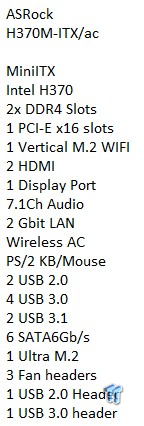
The H370M-ITX/AC features an Ultra M.2, dual Intel Gbit NICs, Wireless-AC, and two HDMI ports.
Pricing
The H370M-ITX/AC cost not available yet.
Packaging and H370M-ITX/AC Overview
Packaging and Overview
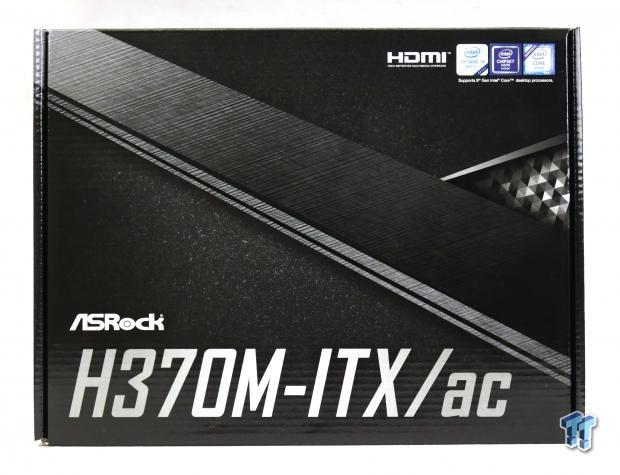
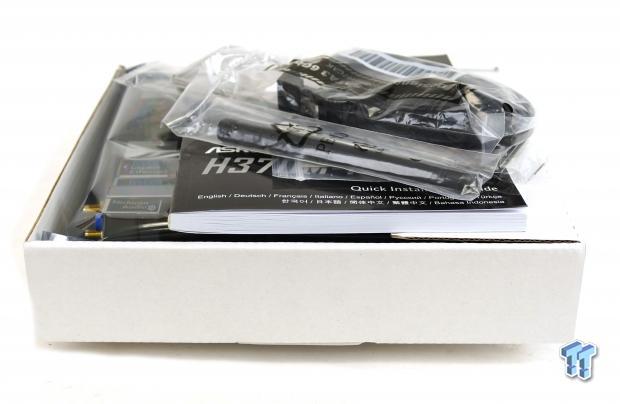
The white and black box is fairly basic and straight to the point, the packaging is also done quite well.
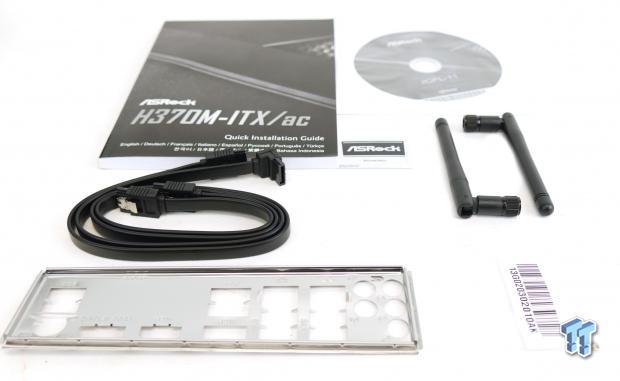
The accessory package includes IO shield, two SATA6Gb/s cables, M.2 screws, WIFI antenna, case badge, driver DVD, and manual.
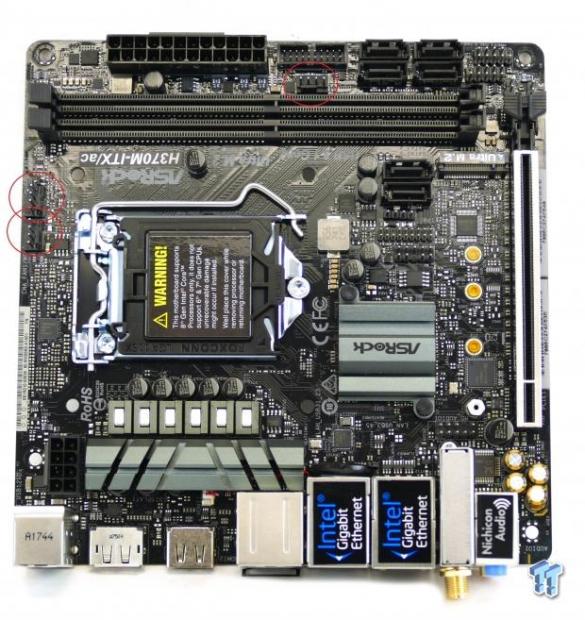
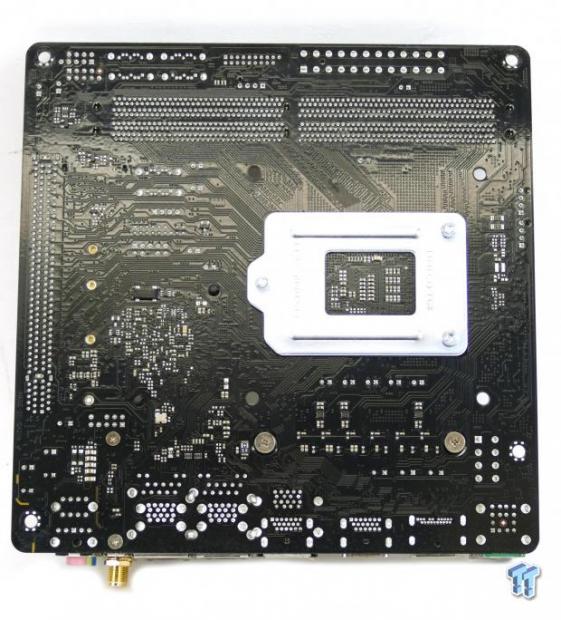
We find three fan headers on the motherboard, the CPU fan header should be rated 1A while the other two are 1.5A. The motherboard's fans can be set in PWM or DC mode, except the CPU fan header which is PWM only. The motherboard offers a classic dark color theme, and the back of the motherboard surprisingly doesn't have many components on it.
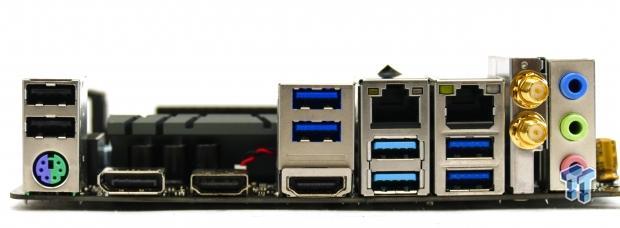
The rear IO panel features two USB 2.0 ports, PS/2 keyboard/mouse, two HDMI, DisplayPort, four USB 3.0 ports, two USB 3.1 type-A ports, two 1Gbit LAN, WIFI ports, headphone out, line in, and microphone ports.
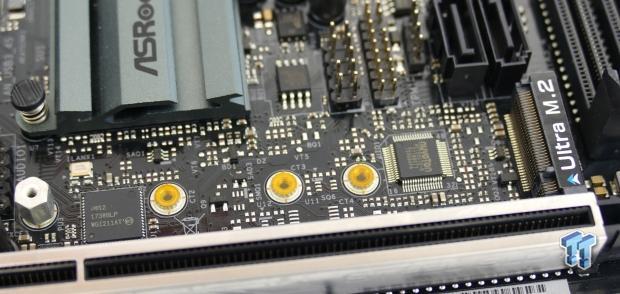
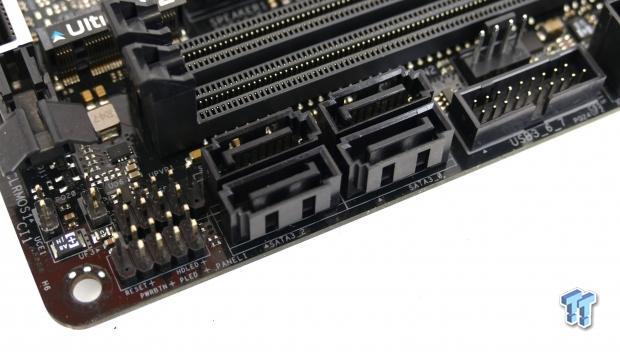
The x4 PCI-E 3.0 port is located right above the PCI-E x6 slot, and it supports both PCI-E and SATA based M.2 drives. The motherboard offers a single USB 3.0 internal header on top of four SATA6Gb/s ports. We also find out front panel headers and USB 2.0 header in this area.
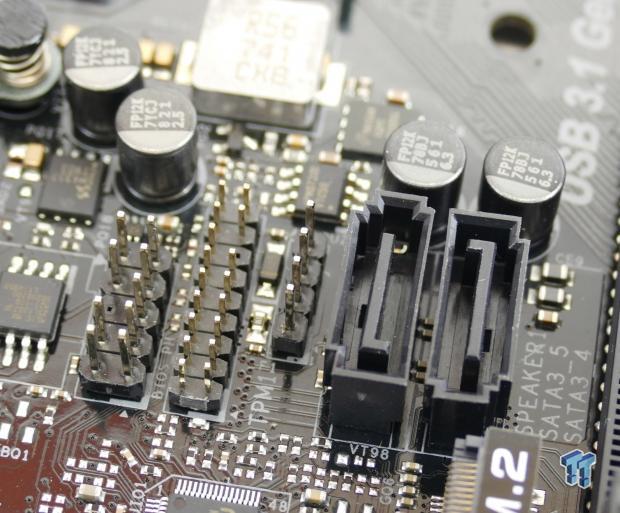
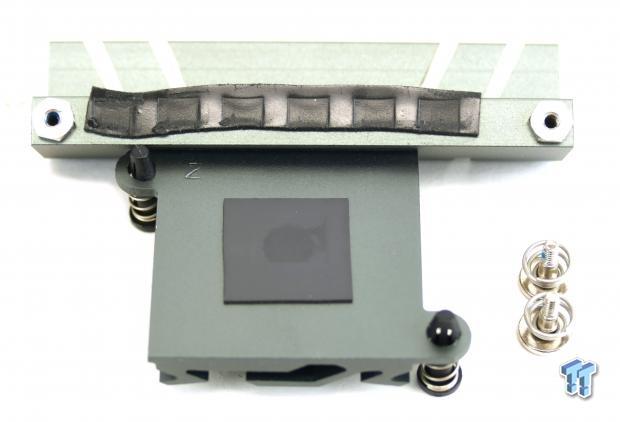
Two more SATA6Gb/s ports are located near a speaker header and the TPM header. There are two heat sinks on the motherboard, the VRM heat sink is screwed into the motherboard and the PCH heat sink uses pushpins to attach to the motherboard.
ASROCK H370M-ITX/AC Circuit Analysis
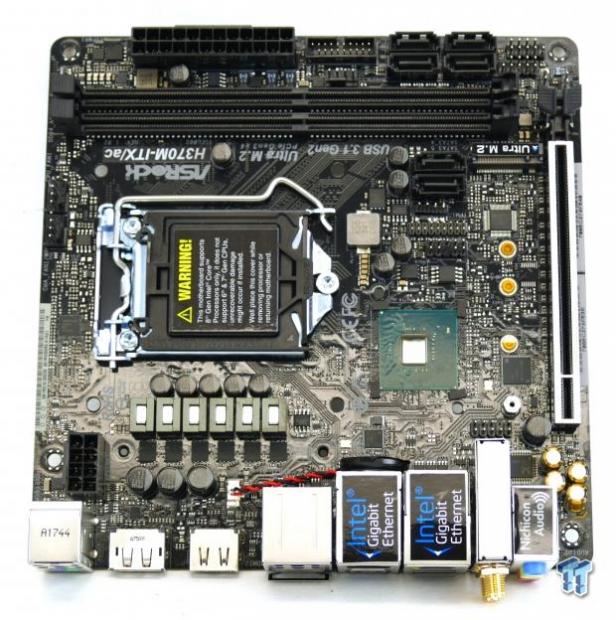
The H370M-ITX/AC shows some secrets when we remove the heat sinks.
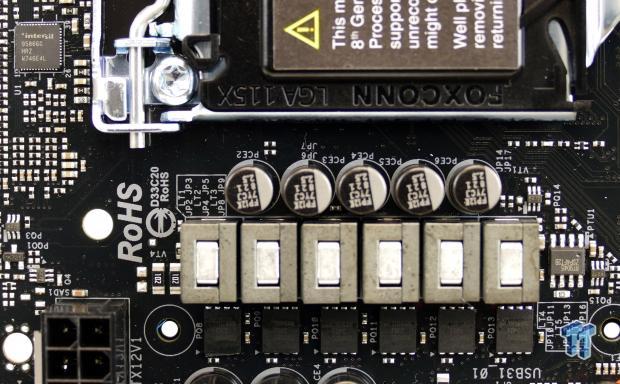
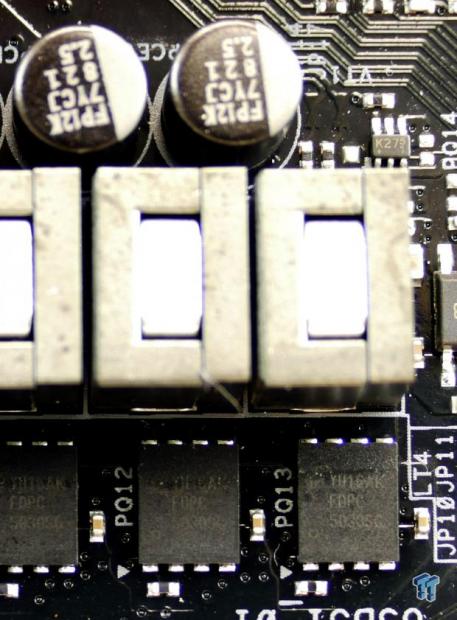
The VRM is in a 4+2 phase configuration and it uses an Intersil ISL95866 4+3 phase PWM controller with two integrated drivers for the main CPU VCore rail and one for the iGPU.
ASRock adds three ISL6608 drivers. Each power stage uses a Fairchild Semiconductor FDPC5030 PowerTrech Power Clip dual N-channel MOSFETs rated around 25A continuous each.
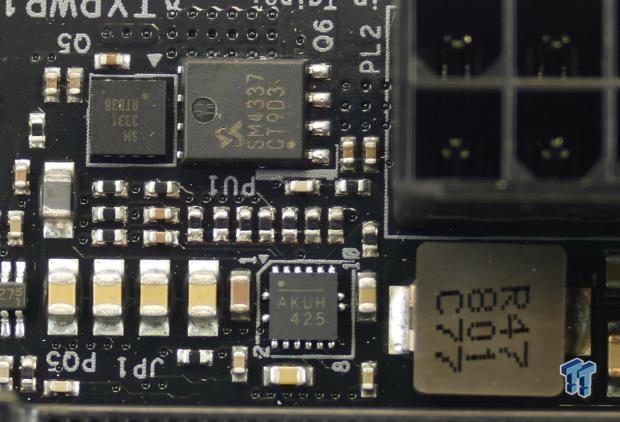
The memory VRM seems to be controlled by some type of combination DDR4 power controller from Monolithic Power Systems, and some Sinopower MOSFETs.
ASROCK H370M-ITX/AC Circuit Analysis Continued
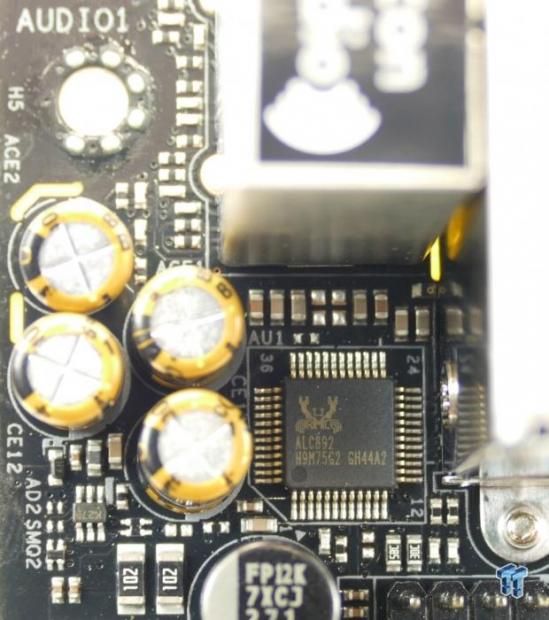
The audio codec is the Realtek ALC892, and some hold audio capacitors are used as well as physical PCB division to improve the audio.
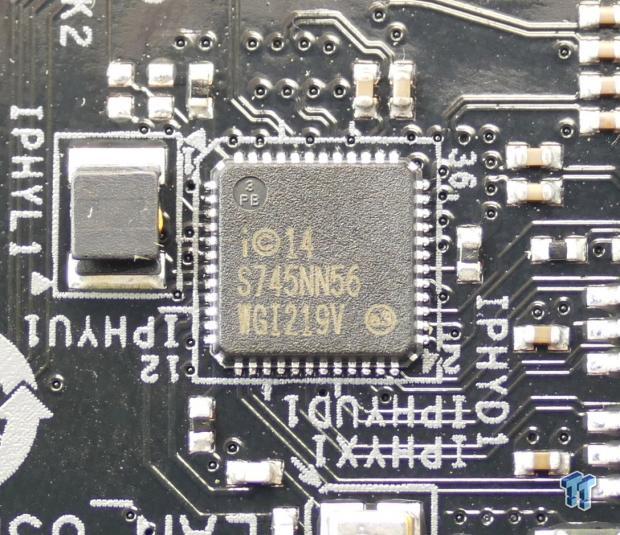
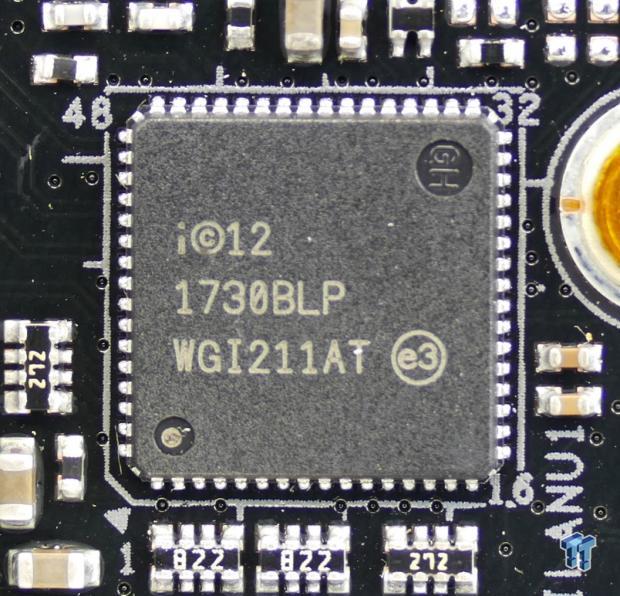
The Intel i219v PHY is used to provide the first Intel NIC, and the i211AT is used to provide the second 1Gbit NIC.

The nnuvoTon NCT5567D is used for the main SuperIO, and a 128Mbit ROM is used for the BIOS.
BIOS and Software
BIOS

The UEFI is similar to that of many other ASRock motherboards, but it obviously lacks anything like multiplier control. Just like other H370 motherboards I have looked at, it lacks any memory multiplier over 26.66x. The UEFI has two operating modes and full fan control in the form of a GUI and a manual input menu. Overall the UEFI for pretty quick and solid, not like most first releases.
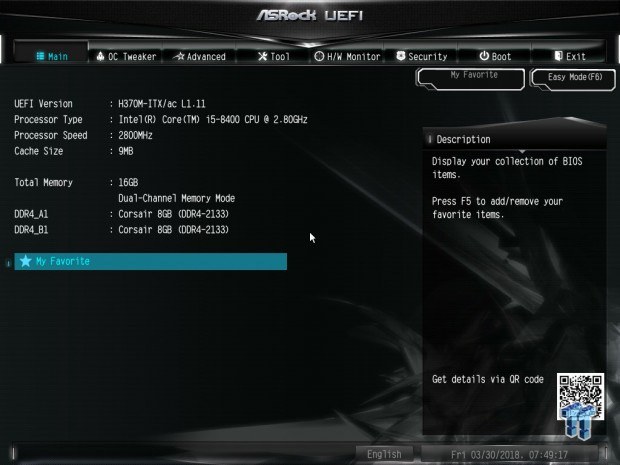

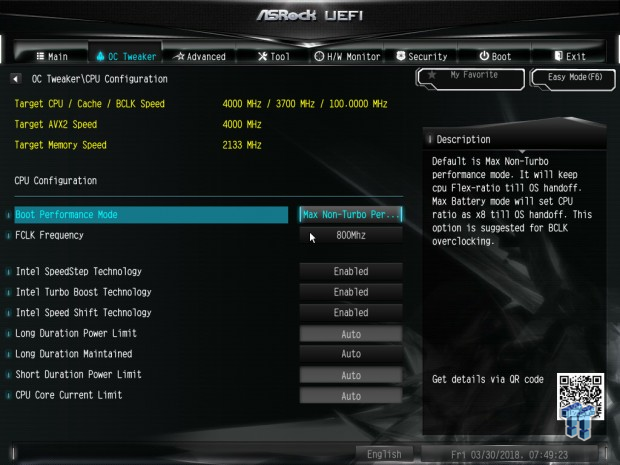
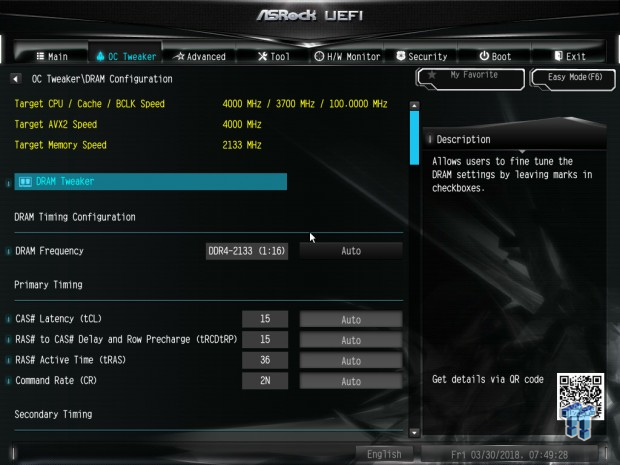
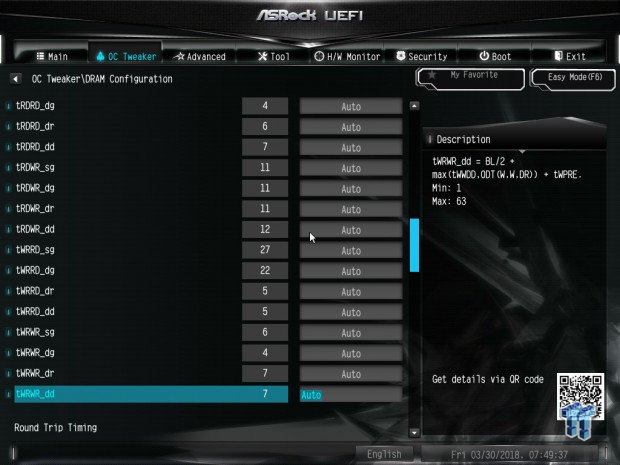
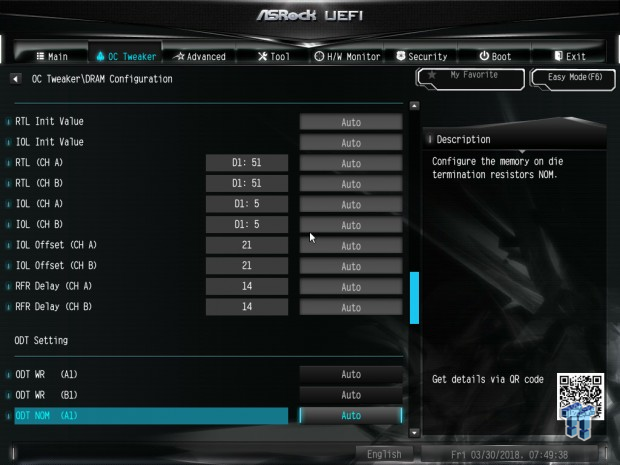

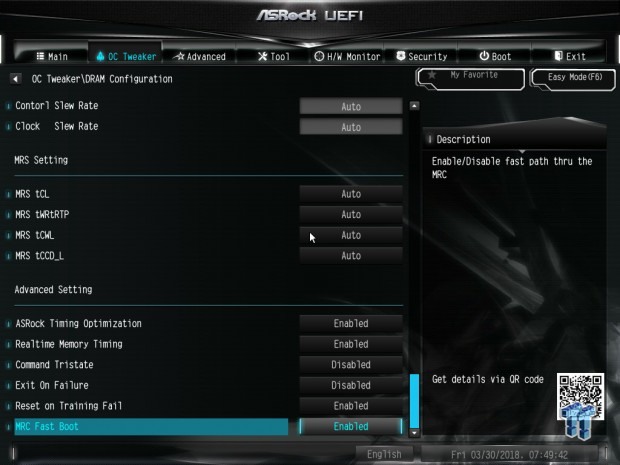
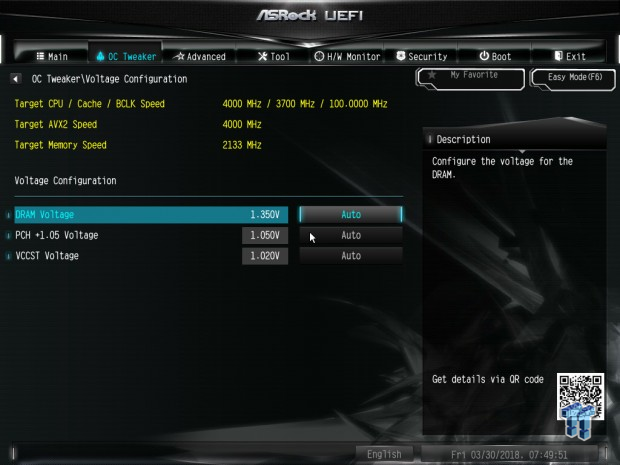
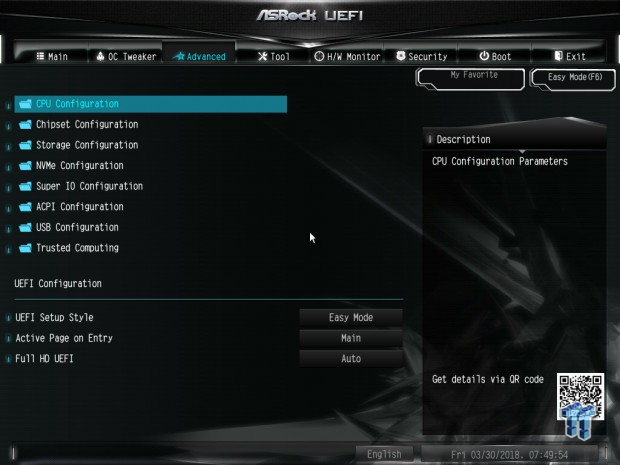
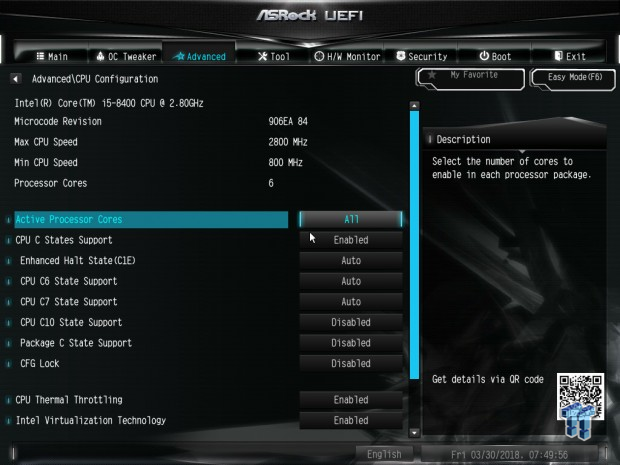
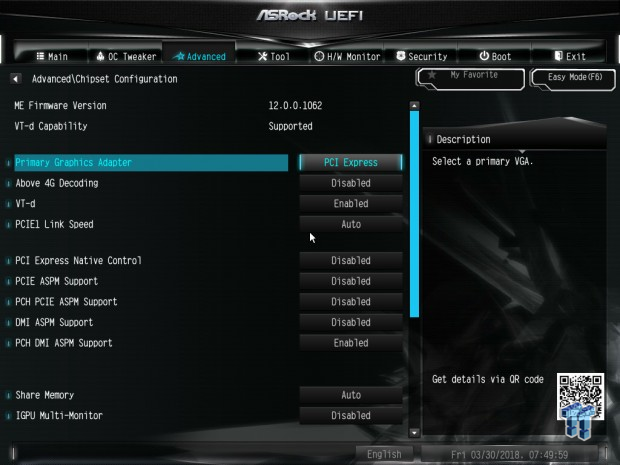
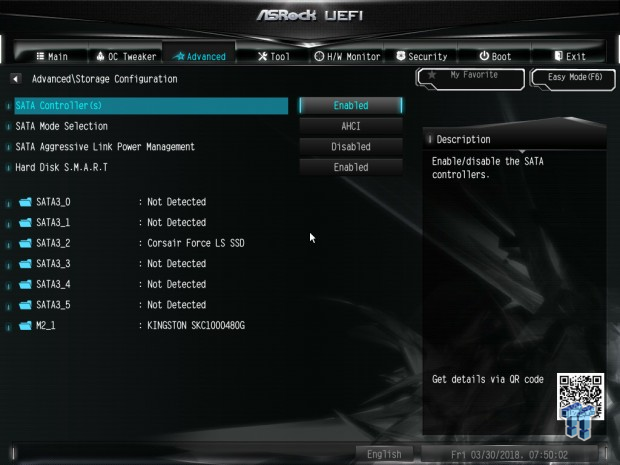
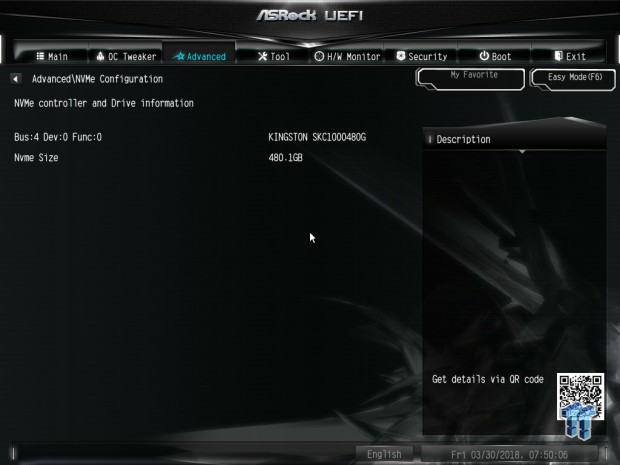
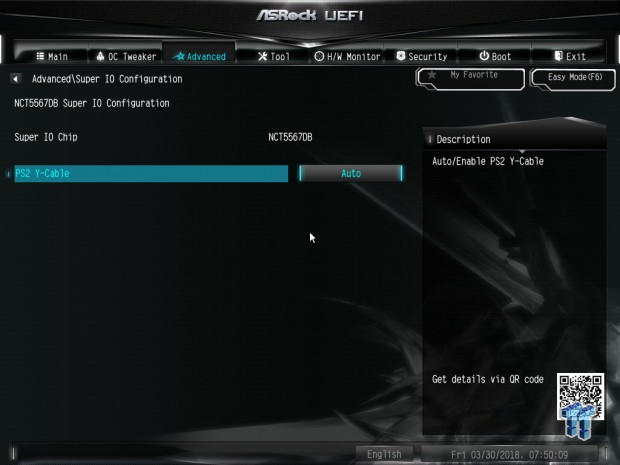
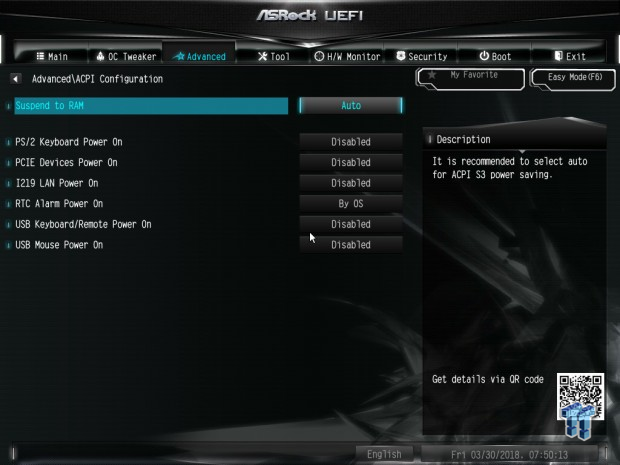
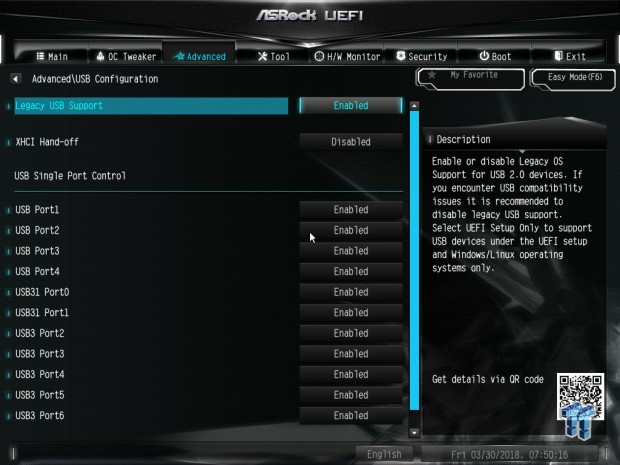
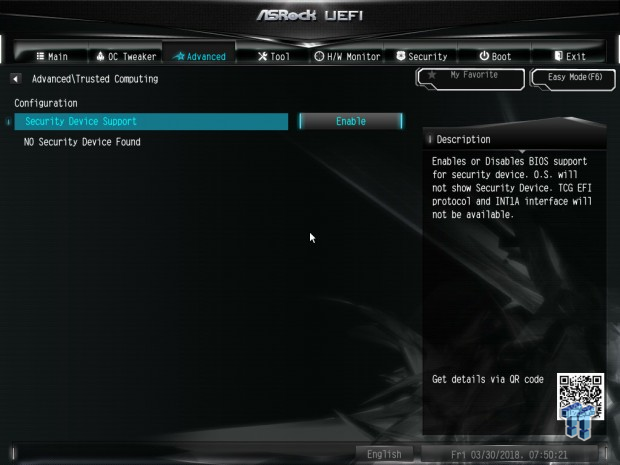
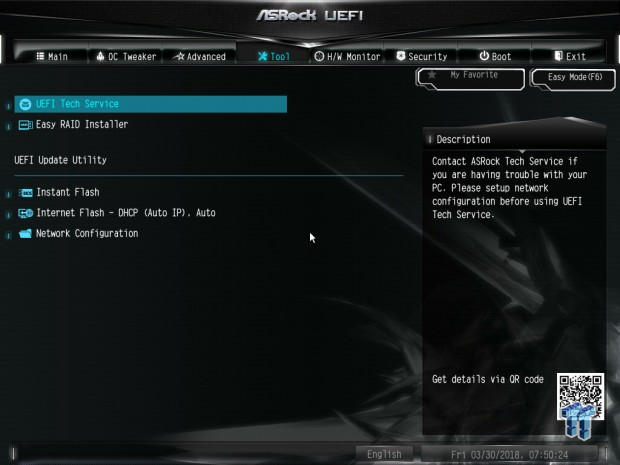
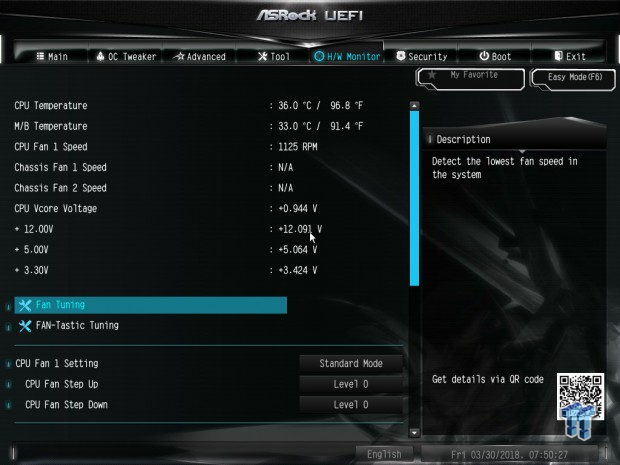
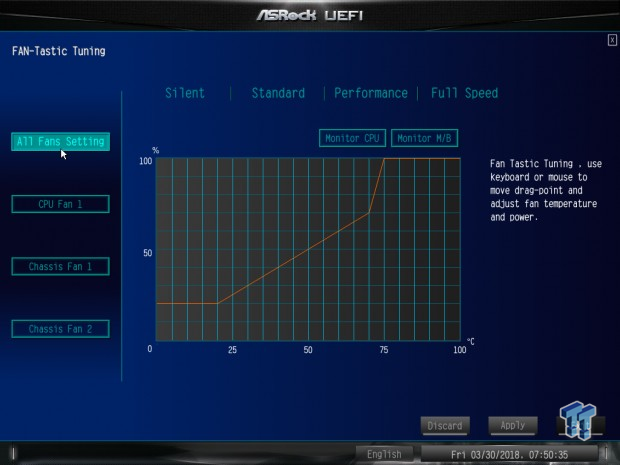
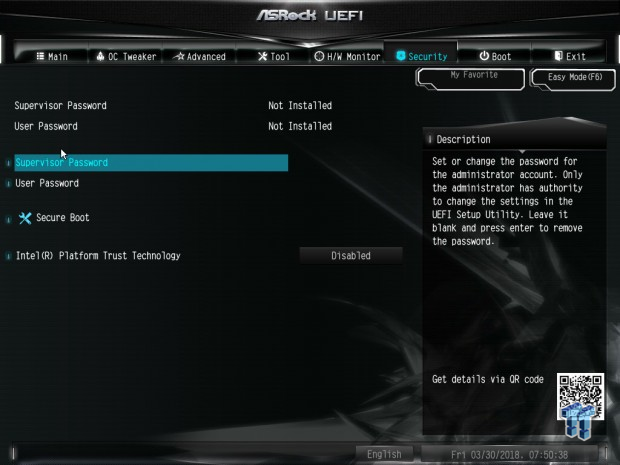
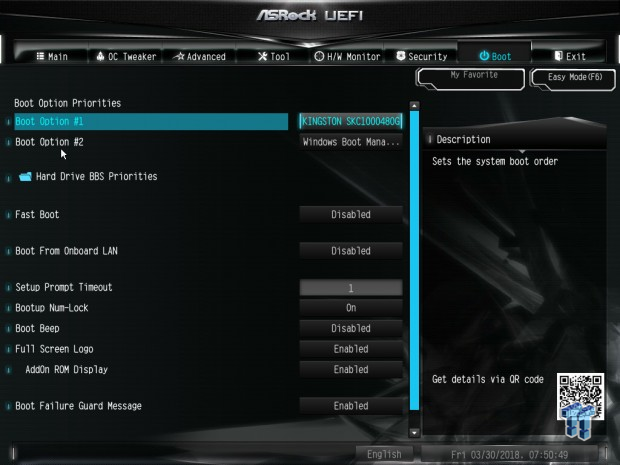
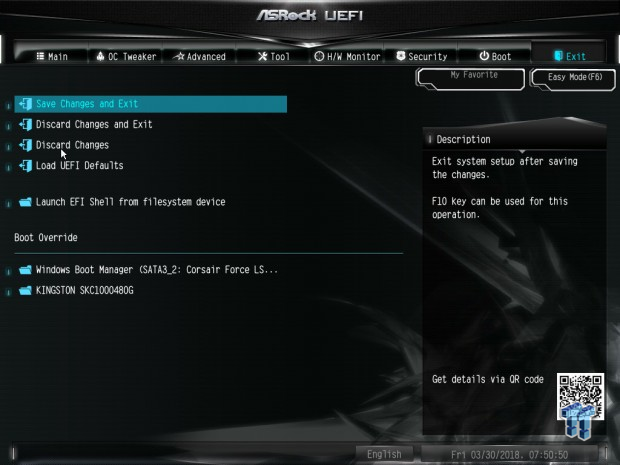
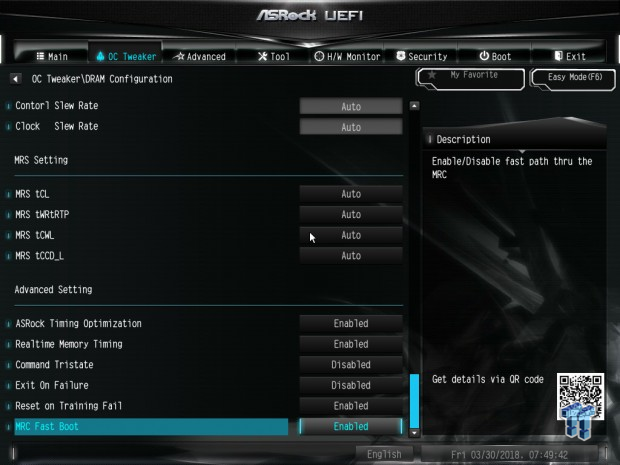
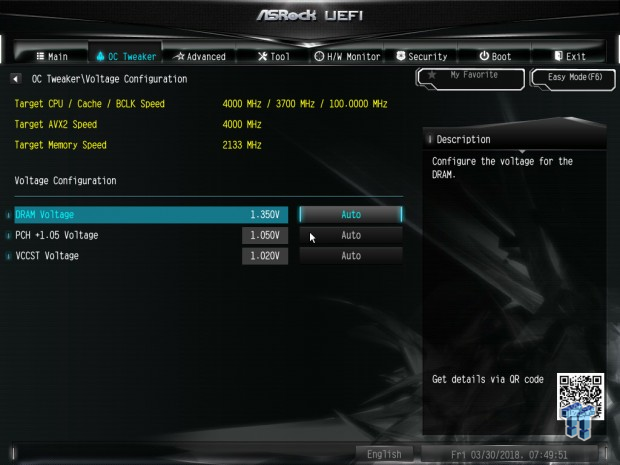
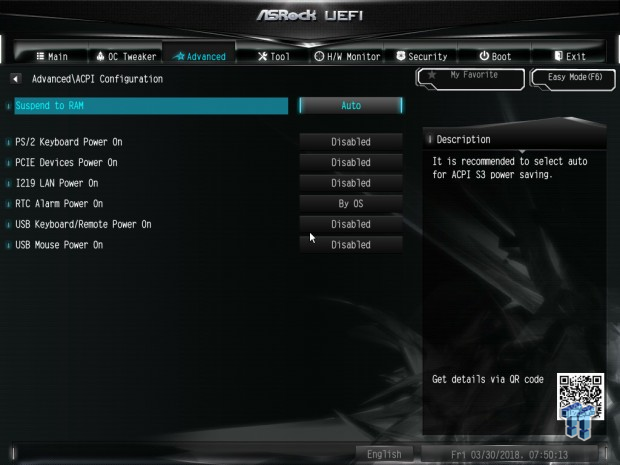
Software
As a pre-release product, we weren't able to download the latest software, but we assume they will offer APP Shop and A-Tuning for fan control.
Test System Setup
Steven's Motherboard Test System Specifications
- Motherboard: ASRock H370M-ITX/ac
- CPU: Intel i5-8400
- Cooler: Corsair H110i - Buy from Amazon
- Memory: Corsair Dominator Platinum 16GB (2x8GB) 3200MHz
- Video Card: GTX 1080 Ti - Buy from Amazon / Read our review
- Storage - Boot Drive: Kingston KC1000 480GB
- Storage - USB Drive: Corsair Voyager GS 64GB - Buy from Amazon / Read our review
- Case: Corsair Obsidian 900D - Buy from Amazon / Read our review
- Power Supply: Corsair RM1000i - Buy from Amazon / Read our review
- OS: Microsoft Windows 10 - Buy from Amazon
- Monitor: ASUS PA328 ProArt 32" 4K - Buy from Amazon
- Keyboard: Corsair K70 LUX - Buy from Amazon
- Mouse: Corsair M65 PRO RGB - Buy from Amazon / Read our review
- Headset: Corsair VOID RGB Wireless - Buy from Amazon / Read our review
- Network: ASUS XG-U2008 10Gbit Switch
- BIOS: L1.11
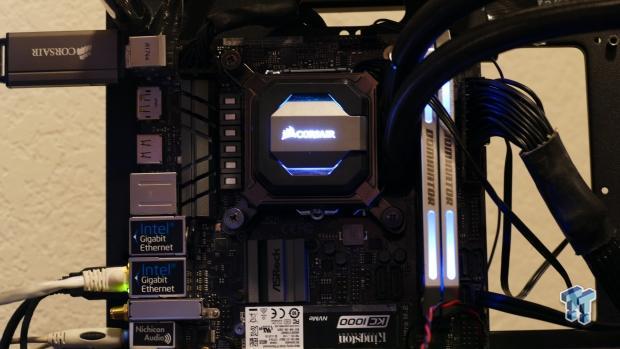
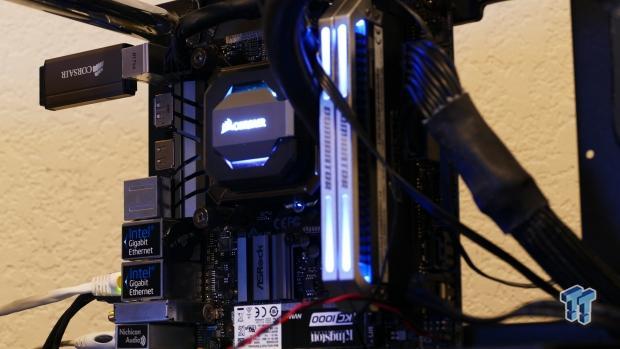
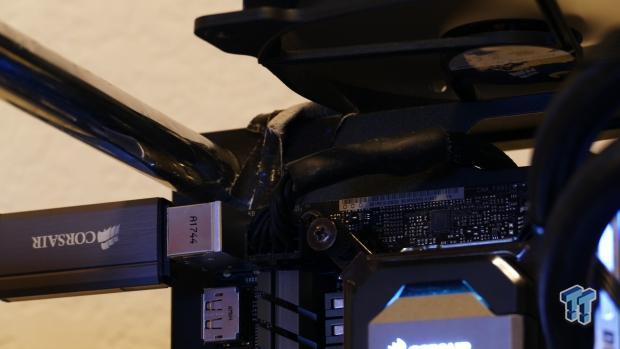
The motherboard has zero LEDs. One thing to keep in mind is to not use thumbscrews to screw the motherboard into your case as you won't be able to plug in the CPU power connector otherwise.
CPU, Memory, and System Benchmarks
CINEBENCH R15
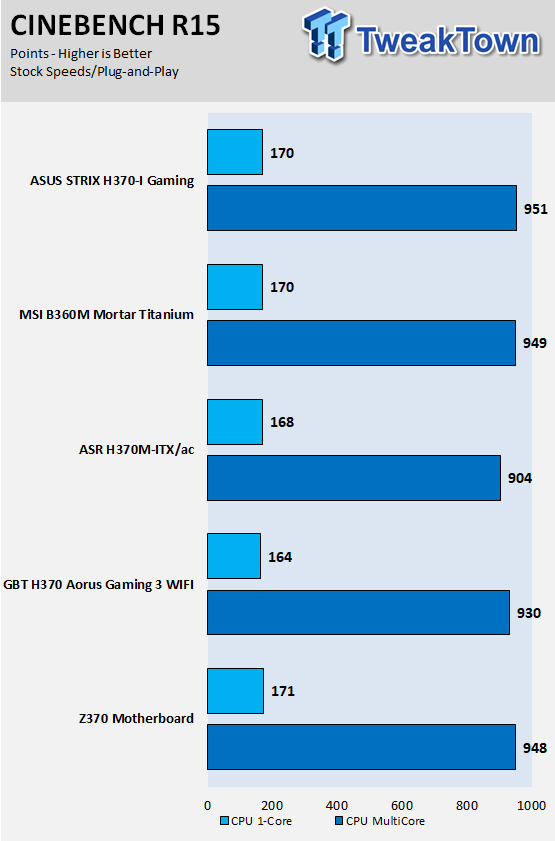
wPrime
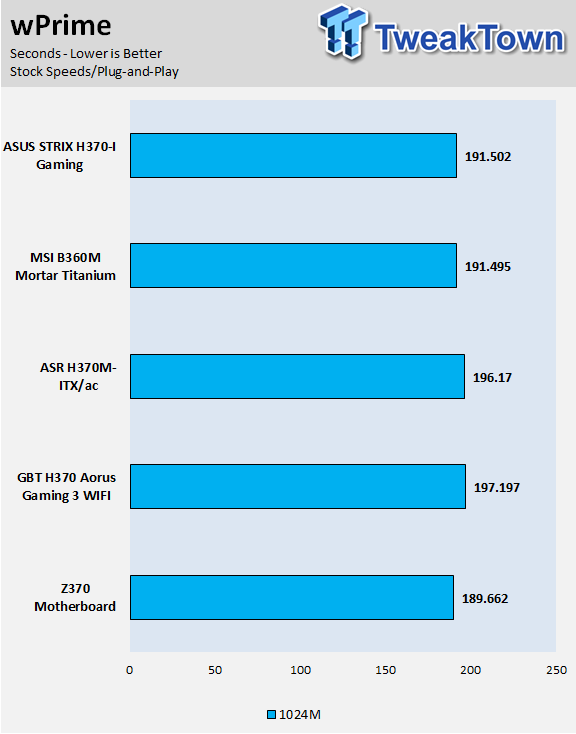
AIDA64 FPU
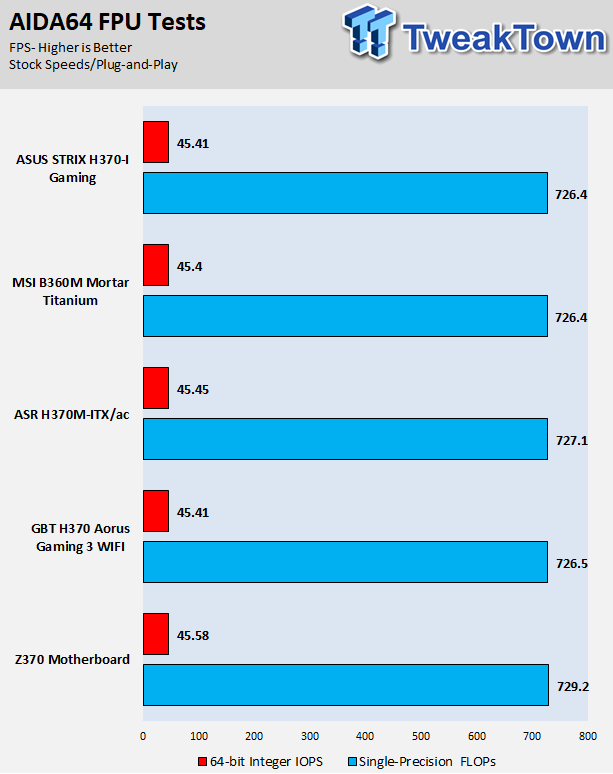
AIDA64 Memory
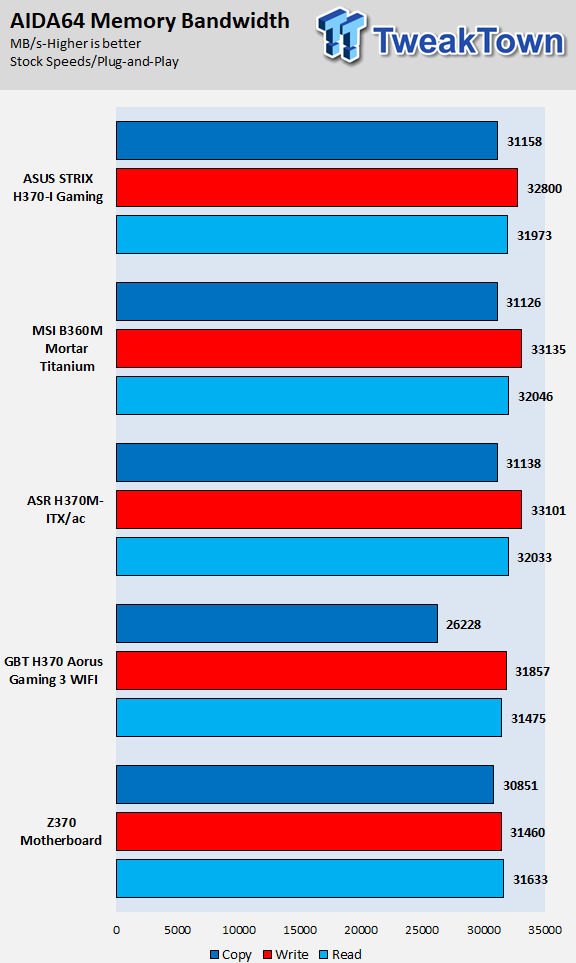
ScienceMark
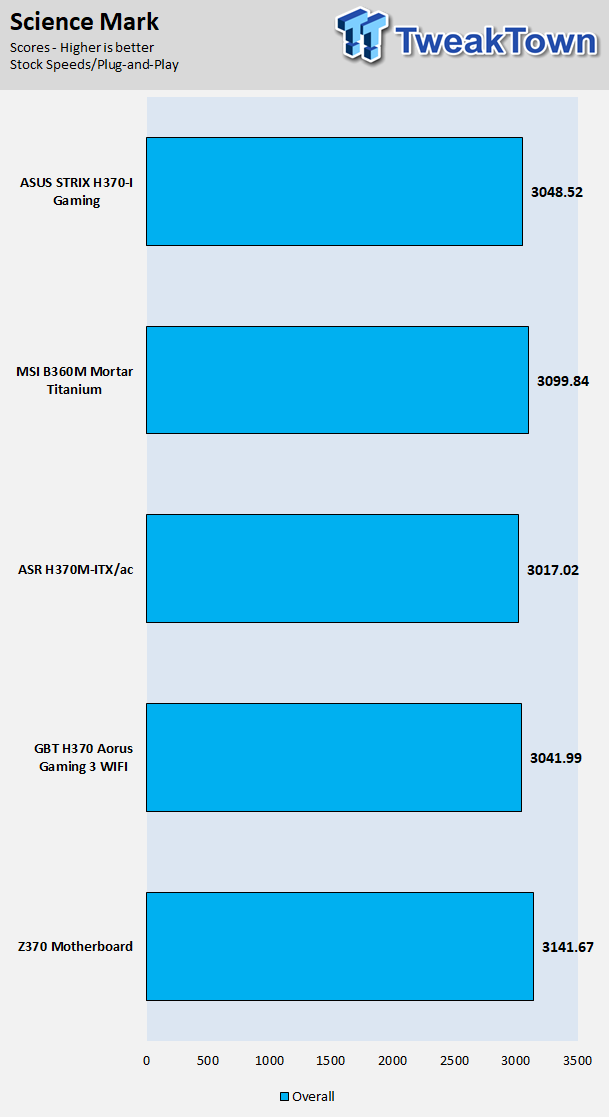
HandBrake
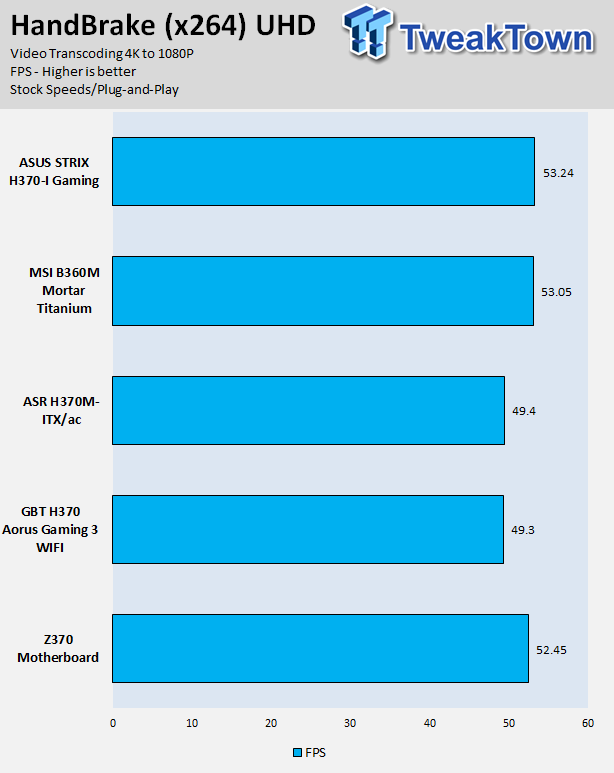
3DMark: Fire Strike
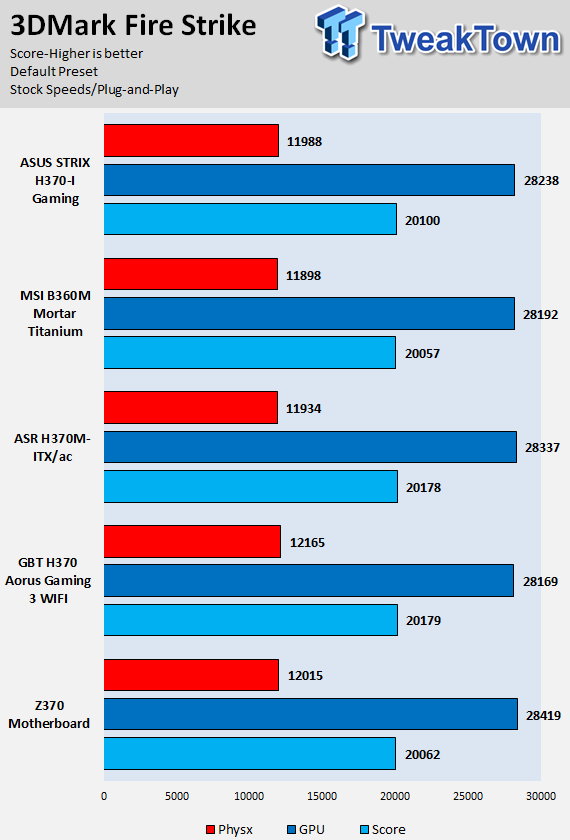
3DMark: Cloud Gate
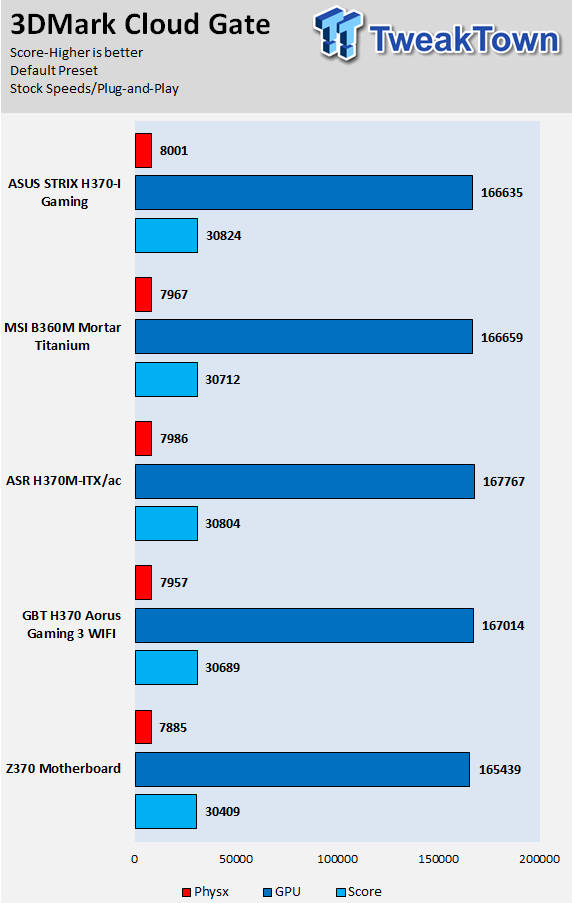
ResidentEvil 6
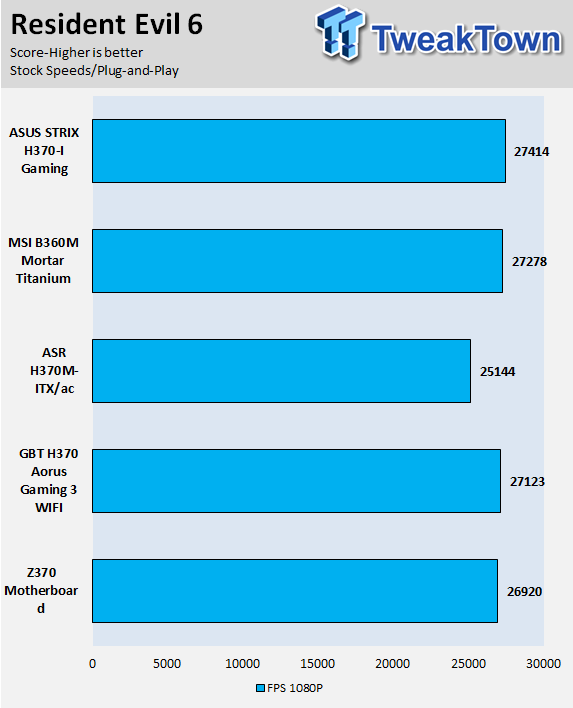
It seems that some boards have some sort of performance boost, possibly from a newer BIOS microcode or because of vendors tweaking Turbo on all cores or BCLK.
The motherboards should all perform the same, and we expect this to become to case as time goes on as the other vendors catch up on microcode or tweaks to Turbo multipliers.
System IO Benchmarks
CrystalDiskMark SATA6G:
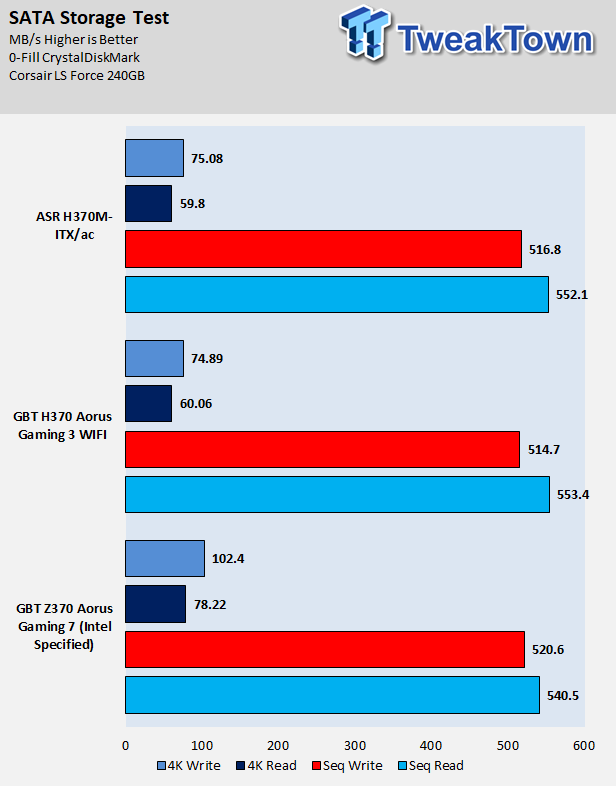
CrystalDiskMark M.2:
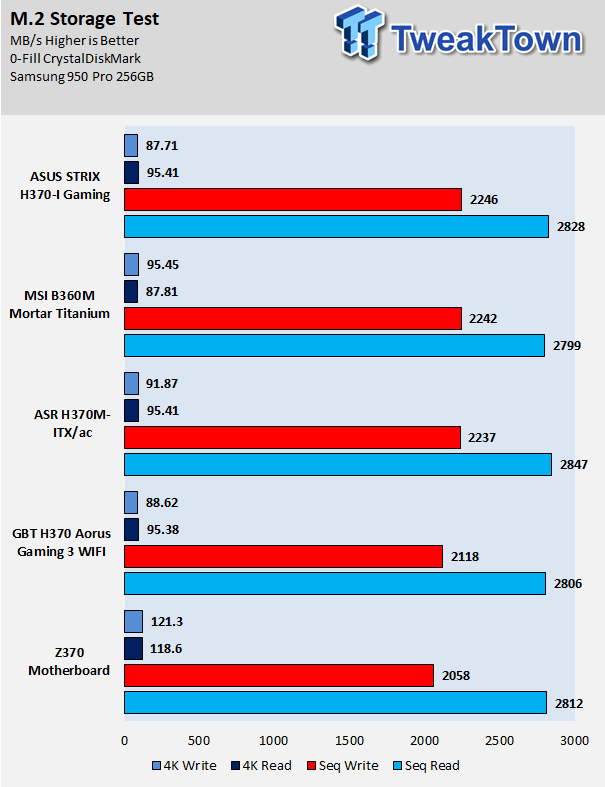
ixChariot Network Throughput:
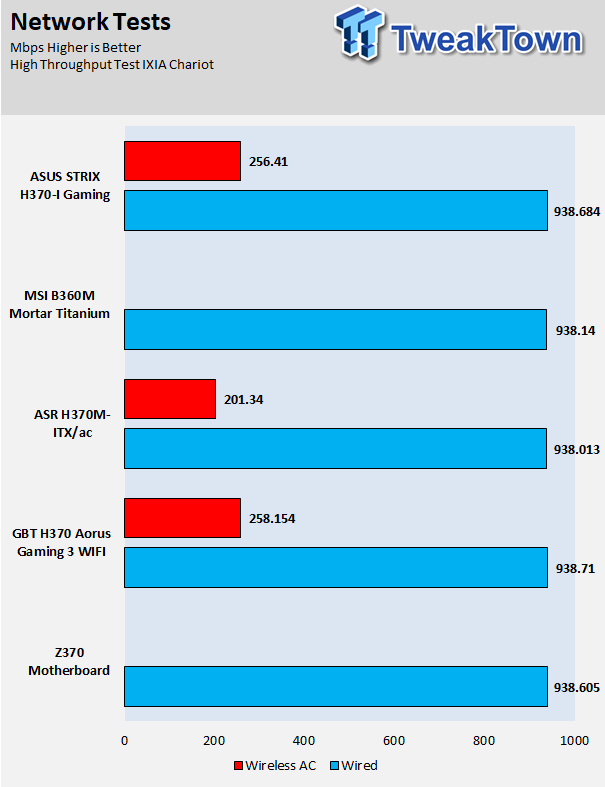
ASRock's storage performance is top notch, and while their wired network performance is excellent, it's wireless AC is only a 1x1 controller (433Mbps) instead of a 2x2 (867Mbps).
Audio RMAA 5.5:
I disable all audio features, set the correct bitrates, and then test the audio with a loopback test.
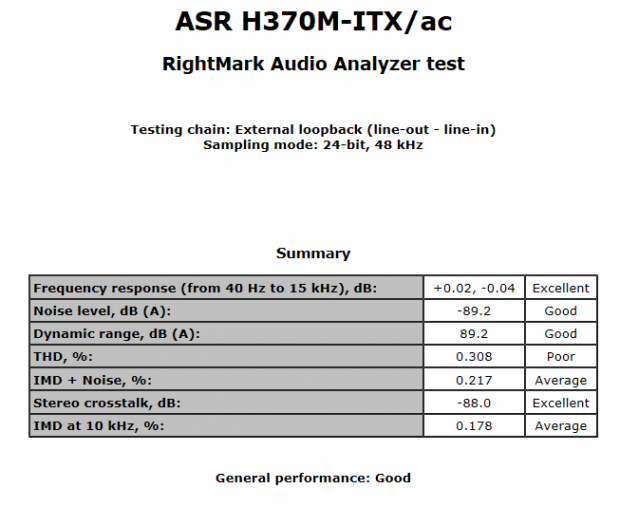
Sound Judgment by Ear: There are five ratings for audio: 1. Problems, 2. Okay, 3. Acceptable, 4. Very good, 5. Excellent
Thermal Imaging and Power Consumption
System power is measured at the wall with an AC power meter.
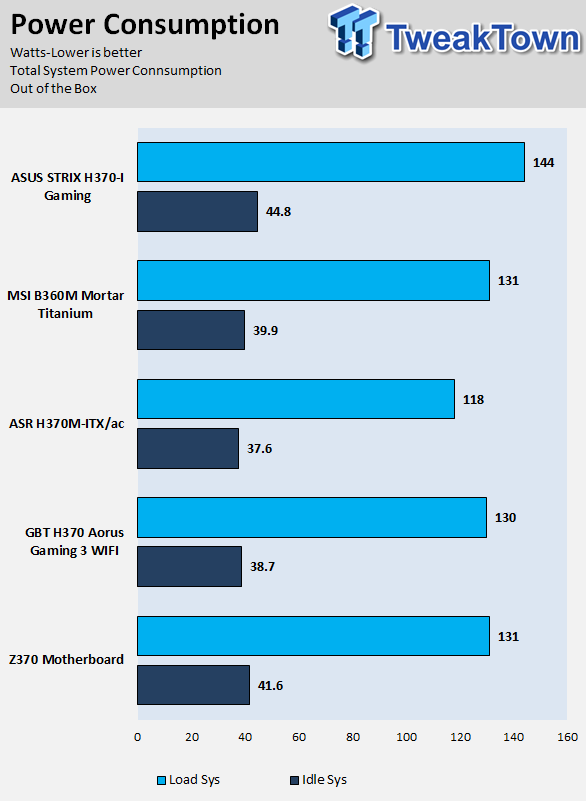
Note on Thermal Images: In the temperature section, we use our Seek thermal imaging camera to capture the surface temperatures of major components on the board.
I look at the VRM and then all other things that light up the screen. If there is something to worry about, then I will state it. Otherwise, I will just show the hotter running parts of the board for fun. Unless some component is over 80-90C, then there isn't anything to worry about.
All systems will act differently, so I will look for commonalities, such as how far from the VRM the heat spreads through the PCB and the difference in temperature between the front side and backside of the PCB.
Keep in mind, the majority of the heat from the VRM goes into the PCB as it is a giant soldered on copper heat sink. A lower temperature on the front of the PCB points towards a more effective heat sink.
Thermal Testing at Stock Speeds:
The image on the left is always at idle, and the image on the right is at load. During ALL TESTS, fans above the VRM that cool the CPU cooler's (Corsair H110i) radiator are turned on to high (12v).
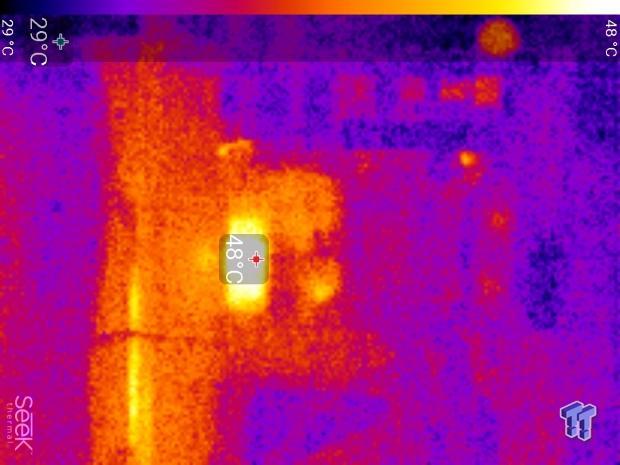

Full frontal.
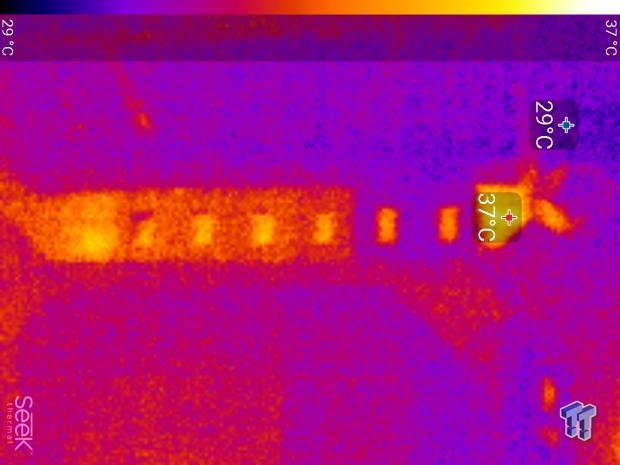
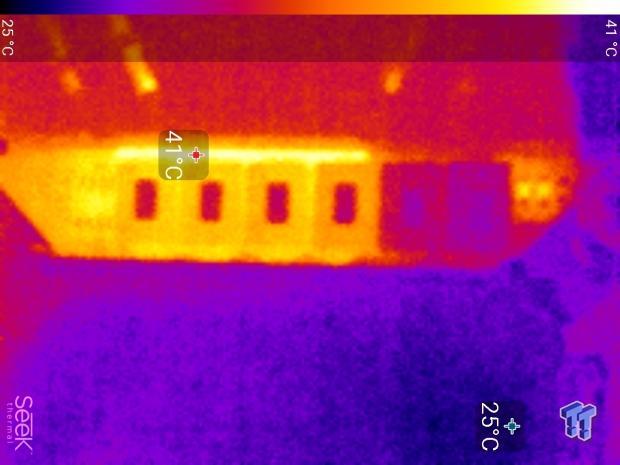
Up-close of the front of the VRM.
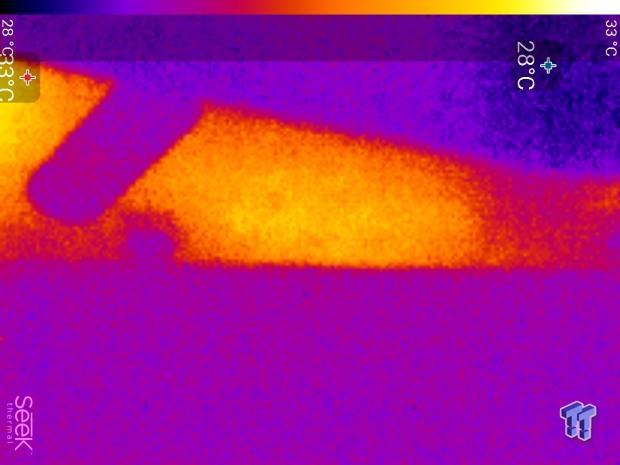
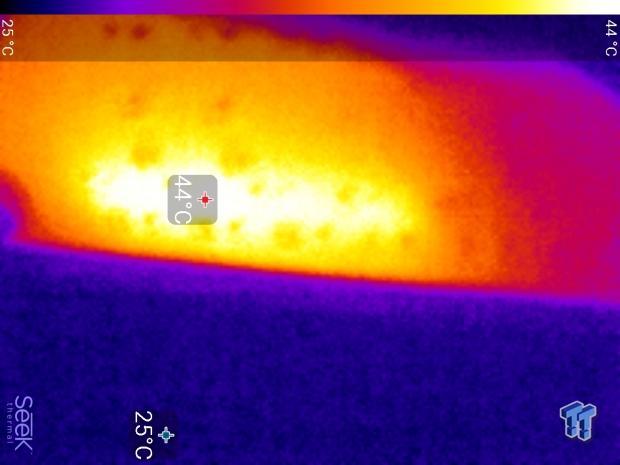
Up-close of the back of the VRM.
The H370M-ITX/AC's VRM is very good and will handle pretty much any CPU in a mini-ITX system. Anything under 60C is great, 60-80C is acceptable, and anything above 80C is a bit worrisome (if at stock).
What's Hot, What's Not & Final Thoughts
Here are key points about the ASROCK H370M-ITX/AC.
What's Hot
Solid VRM: The H370M-ITX/ac uses a very decent VRM for such a tiny motherboard. While you might not think 4+2 phases is enough for Coffee Lake, it is more than enough if you are not overclocking, and since you cannot overclock an H370 motherboard, it's more than enough phases. Thermal imaging reinforces the VRM's quality.

Six SATA6Gb/s: Many mini-ITX motherboards drop a few of the SATA6Gb/s ports, but not this motherboard. It also maintains internal USB headers.
Rear USB: You get a total of eight USB ports on the rear IO. Two are USB 2.0, four are USB 3.0, and two are USB 3.1.
Plain Aesthetics: A gray and black color theme is one of the most asked-for by enthusiasts who want the motherboard to fade into the background, and this motherboard delivers. For those of you who hate RGB, rejoice! The more has no RGBs and no RGB headers.
What's Not
WIFI limited to 433Mbps: While 1x1 wireless AC is limited at 433Mbps like on this motherboard, that might be more than enough for many people.
Final Thoughts
The ASROCK H370M-ITX/ac is a low-cost Z370 alternative aimed at allowing users to take full advantage of the non-K Intel CPU SKUs while not having to disk out a premium on Z370 motherboards. The motherboard ASRock has developed is not only well suited for a small theater PC, but it would also make a great motherboard for a wide variety of systems.
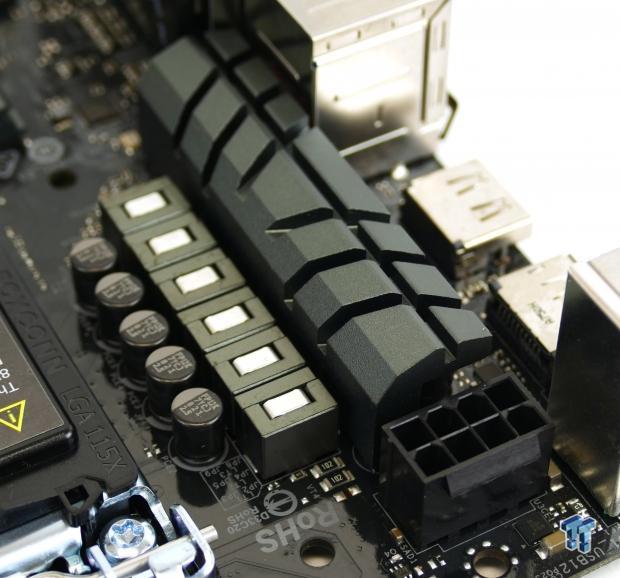
You get dual Intel Gbit LAN, dual HDMI ports, a solid VRM for longevity, and a lot of SATA for storage. They motherboard also approaches aesthetics in a no-nonsense fashion, and we find no LED on the motherboard and no RGB LED header.
If you need a basic yet well-equipped H370 motherboard in the mini-ITX form factor, give the ASRock H370M-ITX/ac a look.

| Performance | 90% |
| Quality | 90% |
| Features | 95% |
| Value | 91% |
| Overall | 92% |
The Bottom Line: Loaded with eight rear USB ports, dual Gbit LAN, WIFI, and six SATA ports, the H370M-ITX/ac packs it all into the mini-ITX form factor.
PRICING: You can find products similar to this one for sale below.
 United
States: Find other tech and computer products like this
over at Amazon.com
United
States: Find other tech and computer products like this
over at Amazon.com
 United
Kingdom: Find other tech and computer products like this
over at Amazon.co.uk
United
Kingdom: Find other tech and computer products like this
over at Amazon.co.uk
 Australia:
Find other tech and computer products like this over at Amazon.com.au
Australia:
Find other tech and computer products like this over at Amazon.com.au
 Canada:
Find other tech and computer products like this over at Amazon.ca
Canada:
Find other tech and computer products like this over at Amazon.ca
 Deutschland:
Finde andere Technik- und Computerprodukte wie dieses auf Amazon.de
Deutschland:
Finde andere Technik- und Computerprodukte wie dieses auf Amazon.de
Similar Content
Related Tags
